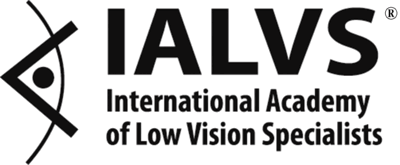
Low Vision Care for Stargardt Disease Patients in Southwest Florida
If you or a loved one has been diagnosed with Stargardt Disease, you may be feeling frustrated, anxious, or unsure about what the future holds. This inherited condition can make everyday activities—like reading, recognizing faces, and using digital screens—increasingly difficult as central vision deteriorates. For young patients, Stargardt Disease can interfere with school, work, and social interactions.
But here’s the good news: vision loss doesn’t have to mean losing independence. Low Vision of Southwest Florida specializes in helping patients with Stargardt Disease maximize their remaining vision and adapt to their changing eyesight.
What Is Stargardt Disease?
Stargardt Disease is a genetic eye disorder that affects the macula, the central part of the retina responsible for sharp, detailed vision. This disease causes a gradual breakdown of light-sensitive cells in the macula, leading to blurry or distorted central vision while peripheral (side) vision remains intact.
Symptoms of Stargardt Disease
- Difficulty reading, recognizing faces, and seeing fine details
- Dark or hazy spots in your vision
- Bright lights and glare become overwhelming.
- Trouble adjusting between light and dark environments
- Colors may appear faded or dull over time.
While symptoms often start in childhood or young adulthood, the rate of vision loss varies from person to person. Many people with Stargardt Disease retain some usable vision for years, allowing them to adapt with the right tools and support.
What Causes Stargardt Disease?
Stargardt Disease is caused by mutations in the ABCA4 gene, which affects how the retina processes vitamin A. In a healthy eye, vitamin A helps photoreceptor cells function properly, but in people with Stargardt Disease, the ABCA4 gene mutation causes a buildup of toxic fatty deposits in the macula, damaging the light-sensitive cells.
Risk Factors for Stargardt Disease:
- Genetics: Inherited from one or both parents who carry the faulty gene.
- Family History: If Stargardt Disease runs in your family, genetic counseling may help assess risk.
- UV Light Exposure: Prolonged exposure to sunlight may accelerate damage to the retina.
Can Stargardt Disease Be Cured?
Currently, there is no cure for Stargardt Disease, but ongoing research in gene therapy and retinal implants offers hope for future treatments.
Stargardt Disease and Low Vision
Stargardt Disease is a leading cause of low vision in children and young adults, primarily affecting central vision while leaving peripheral vision intact.
How Low Vision of Southwest Florida Can Help
Dr. Dennis Denick provides personalized care and advanced vision aids to help Stargardt Disease patients see more clearly, stay independent, and continue enjoying daily activities.
- Electronic Magnifiers & Digital Readers: Improve clarity for reading books, screens, and documents.
- AI-Powered Vision Aids (OrCam, IrisVision, eSight): Assist with reading text, facial recognition, and navigation.
- Glare-Reducing & Contrast-Enhancing Lenses: Minimize light sensitivity and improve visibility in different lighting conditions.
- Bioptic Telescopic Glasses: Help patients utilize their remaining vision for distance tasks.
Even as vision changes, patients can still lead independent lives with the right tools and support. Schedule a consultation with Dr. Denick in Fort Myers today.

